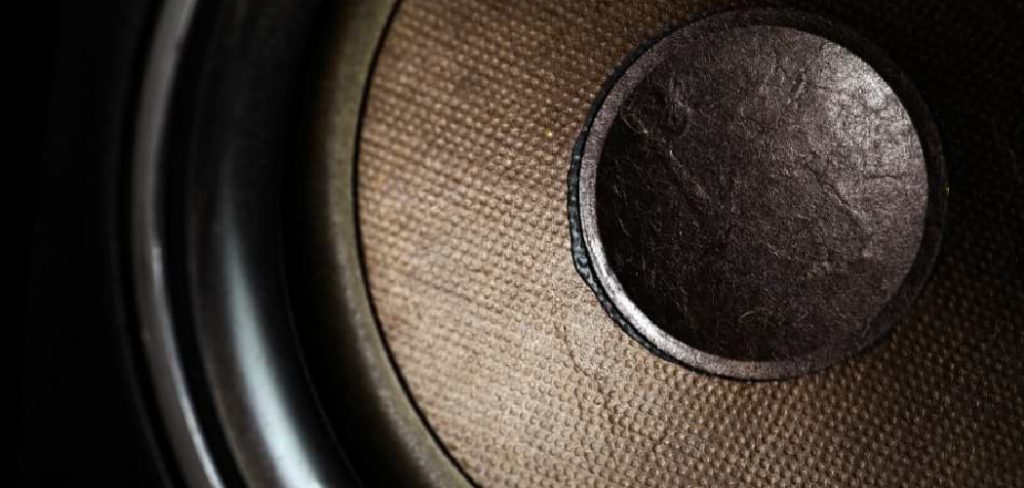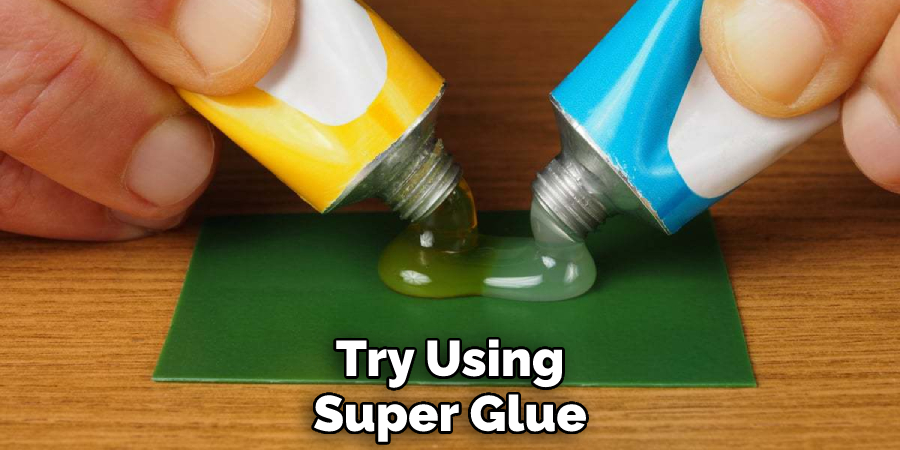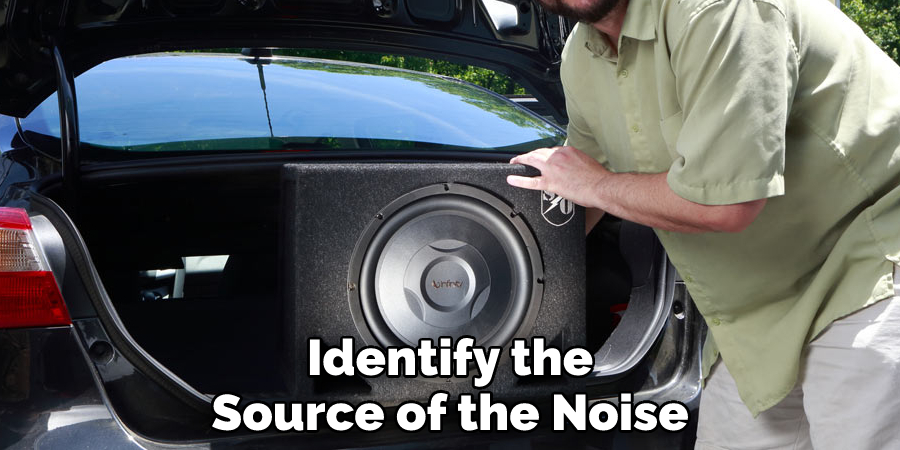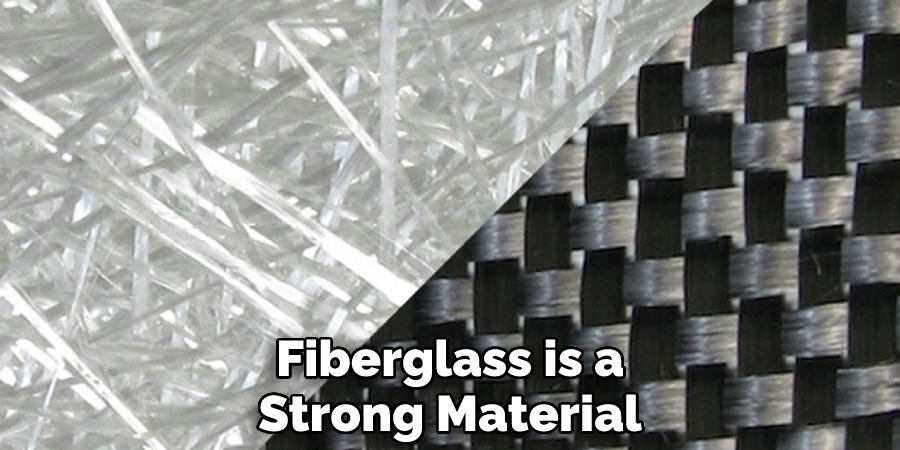If your subwoofer is cracked, fixing it can be a real pain. But with a few simple tools and some guidance, you can have that subwoofer sounding like new again in no time. In this post, we’ll walk you through the process of how to fix a cracked subwoofer, step by step, so if your subs are sounding a little rough around the edges. Please keep reading to learn how to give them new life.

Summary: Repairing a cracked subwoofer requires careful consideration of the type of material used and the severity of the damage. For minor cracks, epoxy, super glue or hot glue can be used to fix them. Duct tape might work in a pinch, but it won’t hold up to much use.
What Causes Cracks in Subwoofers?
There are a few things that can cause cracks in subwoofers. The most common are physical damage, water damage, and age. Physical damage is the most obvious cause of cracks in subwoofers. If you drop your subwoofer or it gets hit by something, the impact can cause cracks to form. Water damage is another common cause of cracks. If your subwoofer gets wet, the water can seep into the speaker and cause the cones to swell and crack.
Age can also cause cracks to form in subwoofers. Over time, the materials in the speaker can break down and weaken, making them more susceptible to physical and water damage. Another less common cause of cracks is electrical problems.
A short circuit or an electrical surge can cause the speaker to overheat and the materials to break down, leading to cracks. Lastly, manufacturing defects can sometimes lead to cracks in subwoofers. If the materials are not of good quality or the speaker is not assembled properly, it can cause problems down the line.
Why Do Cracks Matter on Subwoofer?
Cracks in subwoofers can cause several problems. First, they can cause the subwoofer to leak air, which can cause the speaker to sound muffled. Second, cracks can cause the speaker to produce distorted sounds.
Third, cracks can weaken the structure of the speaker, making it more susceptible to physical damage. Another problem that can occur is that water can get into the speaker through the cracks and cause the cones to swell, which can lead to distortion. Finally, if the cracks are big enough, they can cause the speaker to stop working completely.
Some Simple Ways How to Fix a Cracked Subwoofer
1. Use Epoxy
If the cracks in your subwoofer are small, you can try using epoxy to fill them in. Epoxy is a strong adhesive that can bond the cracked pieces of the speaker together. To use epoxy, mix it according to the instructions on the package and then apply it to the cracks with a putty knife. Once the epoxy has dried, sand it down so that it is flush with the rest of the speaker.
2. Use Super Glue
If the cracks in your subwoofer are small, you can also try using super glue to fill them in. Super glue is a type of adhesive that can be used to fix many different types of material, including plastic. To use super glue, start by applying a small amount of glue to the cracks.
Then, use a toothpick or another sharp object to spread the glue evenly over the cracks. Be sure to smooth out the glue so that it is level with the surface of the subwoofer. Once the glue has dried, you can test out your subwoofer to see if the repairs have worked. If the cracks are still visible, you may need to apply a second layer of glue.

3. Use Hot Glue
Hot glue is another type of adhesive that can be used to fix cracks in subwoofers. Hot glue is applied using a hot glue gun and can set quickly, making it ideal for fixing cracks in subwoofers. To use hot glue, apply the hot glue to the cracked area and hold it in place until the glue sets. If the crack is large, you may need to apply multiple layers of hot glue. Once the hot glue has been set, your subwoofer should be as good as new.
4. Use Duct Tape
Duct tape is a versatile material that can be used for various repairs, including fixing cracks in subwoofers. To use duct tape, clean the area around the crack with a soft cloth. Then, cut a piece of duct tape that is slightly larger than the crack. Apply the duct tape to the crack, ensuring the edges are well-sealed. Finally, use a sharp knife to trim any excess duct tape.
5. Use a Sealant
If the cracks in your subwoofer are large, you may need to use a sealant to fill them in. Sealants are designed to fill in cracks and holes and can be found at most hardware stores. To use a sealant, first clean the area around the cracks with a cloth. Then, apply the sealant to the cracks and allow them to dry. Once the sealant is dry, you can paint over it to match the rest of your subwoofer.
6. Use an Acoustic Enclosure
If the cracks in your subwoofer are causing sound problems, you may need to use an acoustic enclosure. Acoustic enclosures are designed to absorb sound and can help reduce the amount of noise emitted from your subwoofer. To use an acoustic enclosure, first identify the source of the noise. Then, place the acoustic enclosure around the source of the noise. If you’re using an amplifier, you may need to place the enclosure in between the subwoofer and the amplifier. Finally, turn on the enclosure and enjoy your music without worrying about annoying sound leaks.

7. Use Sound Damping Material
If you’re looking for a more permanent solution to cracking sounds, you may want to use sound damping material. This will help block out the vibrations causing the cracking sound. You can find this material at your local hardware store. First, clean the area around the speaker with isopropyl alcohol to apply it. This will help the material adhere better. Then, cut the sound damping material to size and apply it to the inside of the speaker cabinet. Make sure to apply it evenly so that the speaker can still function properly.8. Use a Speaker Cabinet
Speaker cabinets are a great way to reduce the amount of sound that escapes your subwoofer. They work by enclosing the speaker in a box, which traps the sound waves and forces them to bounce around inside the cabinet until they eventually escape through the speaker grill. Cabinets also help to protect your speaker from damage and can be a great way to improve the look of your subwoofer setup.
9. Use Fiberglass
Fiberglass is a strong material that can be used to repair cracks in subwoofers. First, use fiberglass to clean the area around the crack with isopropyl alcohol. Then, cut a piece of fiberglass cloth to fit over the crack. Apply epoxy resin to the cloth, then place it over the crack. Use a putty knife to spread the resin evenly. Allow the resin to dry for 24 hours.

10. Use a Silicone Sealant
Silicone sealant is a flexible material that can be used to fix cracks in subwoofers. To use silicone sealant, first clean the area around the crack with a damp cloth. Then, apply a thin layer of silicone sealant to the crack. Allow the sealant to dry for 24 hours before using the subwoofer. If the crack is large, you may need to apply multiple layers of silicone sealant. Allow each layer to dry before applying the next.
You Can Check It Out To Fix a Blown Subwoofer Coil
Tips and Warnings on How to Fix a Cracked Subwoofer
Tips
- Be careful while handling the subwoofer. The cones are fragile and can be easily damaged.
- Use a screwdriver to remove the screws that hold the cone in place.
- Remove the cone gently and set it aside.
- Inspect the inside of the subwoofer for any cracks or damage.
- If any cracks exist, use a sealant to fill them in.
- Place the cone back in place and screw it in.
- Test the subwoofer to see if it is working properly.
Warnings
- Do not use too much sealant as it can damage the subwoofer.
- Be careful not to drop the cone while removing it or replacing it.
- Make sure that the sealant is dry before testing the subwoofer. Otherwise, it may damage the subwoofer.
- Do not attempt to repair the subwoofer if you are not confident in your abilities. Seek professional help if necessary.
How Much Does It Cost to Fix a Cracked Subwoofer?
The cost of fixing a cracked subwoofer will vary depending on the severity of the damage and the type of repair that is required. For minor cracks, you may be able to use a sealant which can be purchased for around $10. If the damage is more severe, you may need to replace the cone, which costs around $30. Finally, you may need to replace the entire subwoofer for major cracks. Again, depending on the make and model of the subwoofer, this can cost anywhere from $100 to $1000.

Frequently Asked Questions
Is It Worth Repairing A Subwoofer?
Repairing a subwoofer can be cost-effective and improve the sound quality of your audio system. However, before you start work on your project, it is important to determine the extent of damage. If there are broken wires or damaged components, then fixing them may not be worth the time and effort involved.
If only some parts are malfunctioning, however, it may make sense to take care of them as soon as possible. You will likely need to replace blown speakers or capacitors if they fail but other repairs like tightening loose screws or patching holes in the fabric may suffice in most cases.
Ultimately, it is always wise to consult with an expert when repairing any electronic equipment because unskilled work could result in further damage that is difficult (or even impossible) to repair later on.
Does A Tear In A Subwoofer Affect The Sound?
Sound quality is important for anyone who wants to enjoy their music in the comfort of their own home. However, if your subwoofer experiences a tear, it might not function as well as it should. This is because sound waves flow through objects and are interrupted when they pass through any type of tear or damage. In most cases, this will result in reduced audio clarity and an overall less enjoyable listening experience.
Why Is My Sub Crackling?
There can be many reasons why your subwoofer is crackling, and the most common ones are improper installation or wiring, overloaded power sources, and incorrect crossover frequencies.
Here are a few things you can do to try and fix the issue:
- Check to make sure that the subwoofer is properly installed – Make sure that the subwoofer is installed in a level and stable position, and that the mounting screws are properly tightened. Make sure that no objects or debris are obstructing the flow of air into or out of the subwoofer.
- Verify that the power source is adequate – Verify that the power source is capable of providing enough wattage to the subwoofer. If you’re using a powered subwoofer, make sure that the power cord is properly plugged into an outlet and also into a power strip or surge protector.
- Check for crossover frequencies – If you’re experiencing crackling sounds, it may be due to incorrect crossover frequencies. To check for crossover frequencies, turn your subwoofer off and on several times while listening for any changes in sound quality. Be sure to consult your speaker’s owner’s manual for more help.
If you have any other questions about your speaker or installation, please don’t hesitate to contact us at our toll-free number! We would be happy to help!
What Does A Blown Sub Smell Like?
A blown subwoofer usually smells like burned electronics. When the bass box launches sudden and excessive air into the speaker enclosure, it can cause a fire.
This is because high-frequency sound waves travel much faster than low-frequency sound waves, which makes them more likely to interact with material that’s in close proximity to the speaker cone. In extreme cases, this interaction can result in an explosive reaction that produces smoke and heat.
Conclusion
So there you have it, some tips on how to fix a cracked subwoofer. Use these tips to get your subwoofer sounding good as new in no time. Do you have any tips on how to fix a cracked subwoofer? Please share them in the comments below.
